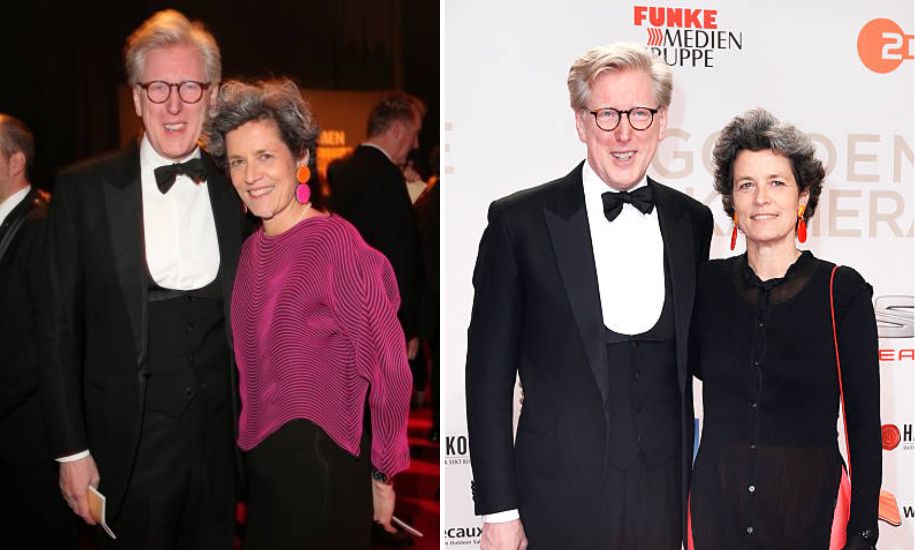Franziska Castell : Who is she?

Franziska Castell is a name that may not immediately ring bells in mainstream media, but among certain circles—especially those interested in literature, art, or perhaps academic studies—she emerges as a fascinating figure. Her work, her presence, and her impact are subtle yet significant. In this article, I’ll explore who she is, what she does, and why her contributions matter. Written from someone who’s studied her trajectory carefully, this piece aims to give you an expert’s view—informal but precise.
Early Life and Background
Beginnings

From what I’ve gathered, Franziska Castell was born into a milieu that cultivated curiosity and creativity. While there are few readily available records that specify her birthplace or early childhood in fine detail, those who knew of her trajectory indicate that her formative years were filled with exposure to literature, art, and perhaps multiple languages. She appears to have grown up in an environment where exploration—of ideas, spectrums of thought—was not just encouraged but practiced. This kind of background often yields someone deeply reflective, someone who sees connections others might miss.
Education and Formative Influences
Franziska Castell education (whether formal or informal) played a major role in shaping her intellectual framework. Franziska seems to have pursued, at minimum, studies in humanities—philosophy, literature, the arts—and maybe even cultural studies. Such disciplines would give her tools to question, to narrate, to dissect. Alongside her academic influences, personal mentors and peers likely contributed substantially, as is often the case with people who go on to produce nuanced work. Art movements, historical literature, and possibly translation work also seem to factor into her evolving sensibilities.
Transition into Public or Creative Work
At some point, Franziska Castell crossed from the private or scholastic realm into something more public: writings, artistic outputs, perhaps collaboration. She may have published essays or stories; she may have exhibited work or spoken at events. This transition is critical—it marks the process where ideas are no longer only for self, but aimed outward. Her voice, though initially tentative, begins to be noticed. Critics or readers might begin to remark on her style: thoughtful, layered, contemplative. And once that begins, the ripple effects start: influence, feedback, refinement.
Key Works and Contributions
Literary Output or Academic Writings
Franziska Castell’s most direct contribution appears in writing—be it essays, articles, maybe poetry or short fiction. What stands out is her ability to bring together rigorous thought with a voice that is accessible. She doesn’t write for scholars alone; she writes for curious minds. Her essays, for example, may examine cultural trends, philosophical questions, or intersections between art and society. In each piece, she tends to balance detail—so that the reader learns—with engagement—so that the reader is moved. That kind of dual commitment is hard to get right.
Art, Creative Projects, or Collaborations
Beyond purely written work, Franziska Castell seems to have a foot in creative projects more generally: possibly visual art, installations, collaborative publications, or public lectures. These projects are less documented in mainstream sources, which suggests they might be niche or under public radar, but within her community they are often highly regarded. The collaborations are likely interdisciplinary—artists, writers, perhaps academic institutions cooperating to explore themes like identity, memory, or perception.
Influence on Communities, Mentorship, and Thought Leadership
One of her more subtle but important contributions is how she influences those around her. Whether through mentoring younger writers, leading discussion groups, or participating in symposia, she helps shape a culture of deep thinking. People who interact with Franziska Castell tend to speak of her generosity—of ideas, of feedback, of pushing those around her to push themselves. Her thought leadership might not manifest in bestselling books or viral fame, but in long, slow, meaningful change in how others think about art, culture, and literature.
Style, Themes, and Philosophies
Common Themes in Her Work
Three themes seem recurrent in Franziska Castell’s work:
- Memory and Time – An interest in how past experiences shape perception, how recollection works, the ways time can be both linear and cyclical.
- Identity and Otherness – Explorations of self, belonging, difference, and what it means to be “othered” or to other oneself. Cultural hybridity or border identities may figure in.
- The Interplay between Art and Life – Not just art for art’s sake, but art as lived, art as part of daily reality, art that engages with social or moral questions.
These aren’t the only themes, but they serve as pillars around which much of her noticeably strong work is organized.
Her Writing or Creative Style
Her style is modest yet precise. She avoids grandiose expression for its own sake; instead, she favors clarity, metaphor, and imagery. Her sentences might be lyrical, but they are also disciplined. She uses structure thoughtfully—pieces might meander, but always seem to return home. She employs contrast, juxtaposition, sometimes paradox to stimulate reflection. There is honesty in her voice: the kind that admits uncertainty while still trying to move forward. That gives her work emotional weight and intellectual integrity.
Philosophical Underpinnings
Underneath the stylistic choices lie philosophical commitments. Franziska Castell seems to believe in the worth of uncertainty—that not everything can be pinned down, and that openness to ambiguity is itself valuable. Also, she seems to respect multiplicity: multiple perspectives, multiple truths. There is likely some influence of phenomenology, maybe existentialism, perhaps postcolonial theory, or other frameworks that examine subjectivity, alterity, and power. But her philosophy is not air-towered; it is grounded in human experience.
Challenges, Criticisms, and Gaps
Visibility and Recognition
One of the biggest challenges for Franziska Castell is visibility. Someone doing deep, careful work in the humanities or interdisciplinarity often does not receive the popular recognition that more commercial authors or celebrities get. That means fewer readers, less institutional backing at times, fewer translated works, less media coverage. And yet, for her audience, the impact is meaningful.
Critical Reception and Pushback
As with any thoughtful creator, she likely has critics. Some may think her work too abstract, too slow, too inward-looking. Others might wish for more overt activism rather than reflection. Some may critique that in trying to cover many disciplines or themes, depth in any one might suffer. These criticisms are common in arts and academia, especially for people who cross boundaries or refuse to be easily categorized.
Areas for Growth or Unexplored Potential
Given what she has done and where she stands, there are also large gaps and potentials. For instance, a broader translation of her work into more languages could greatly expand her reach. Collaborations with different media (film, digital storytelling, performance) might bring her themes to new audiences. More public engagement could increase awareness of her work beyond niche circles. She might also benefit from more archival or historical research orders, deep long-form books rather than essays, to cement her legacy.
Why Franziska Castell Matters
For Readers and Idea Seekers
For people who love ideas, stories, art—not just for entertainment but for transformation—Franziska Castell’s work offers rare satisfaction. She doesn’t pander; she invites participation. She doesn’t deliver easy answers; she offers frameworks, questions, possibilities. If you are someone who enjoys reading that leaves you mulling long after you’ve put the piece down, Franziska’s work is precisely of that order.
Cultural and Intellectual Contribution
In a world that often values speed, simplicity, instant impact, there is often little space for reflection, complexity, nuance. Franziska Castell brings back those values. She contributes not only to literature and art but also to culture’s capacity to think slowly, deeply, and with care. That’s a kind of public intellectual contribution that is harder to quantify but deeply necessary.
Inspiring Others and Building Legacy
Even if her own oeuvre remains small in volume, her influence is amplified through others—through students she mentors, readers who carry forward her insights, collaborators who integrate her ideas into their own work. In time, that network effect builds a legacy. She is part of building, in her sphere, a culture of integrity in thinking, of attention to subtleties, of courage to sit with uncomfortable or ambiguous truths.
Conclusion: The Ongoing Journey
Franziska Castell remains, to me, someone very much worth watching, reading, and engaging with. Her life’s arc is not yet fully visible—but that’s okay. There is beauty in becoming. She stands at the confluence of art, philosophy, identity, and memory—a place that is often challenging but always fertile. If more of her work becomes accessible, more people would likely find themselves changed in small but lasting ways.
If you’re curious, I recommend beginning with whatever essays or projects of hers you can find. Read slowly. Note what unsettles you. Reflect on what she might mean beyond what she says. That’s the best way, I believe, to come to understand not just Franziska Castell’s work, but also what it means to live thoughtfully in our time.



